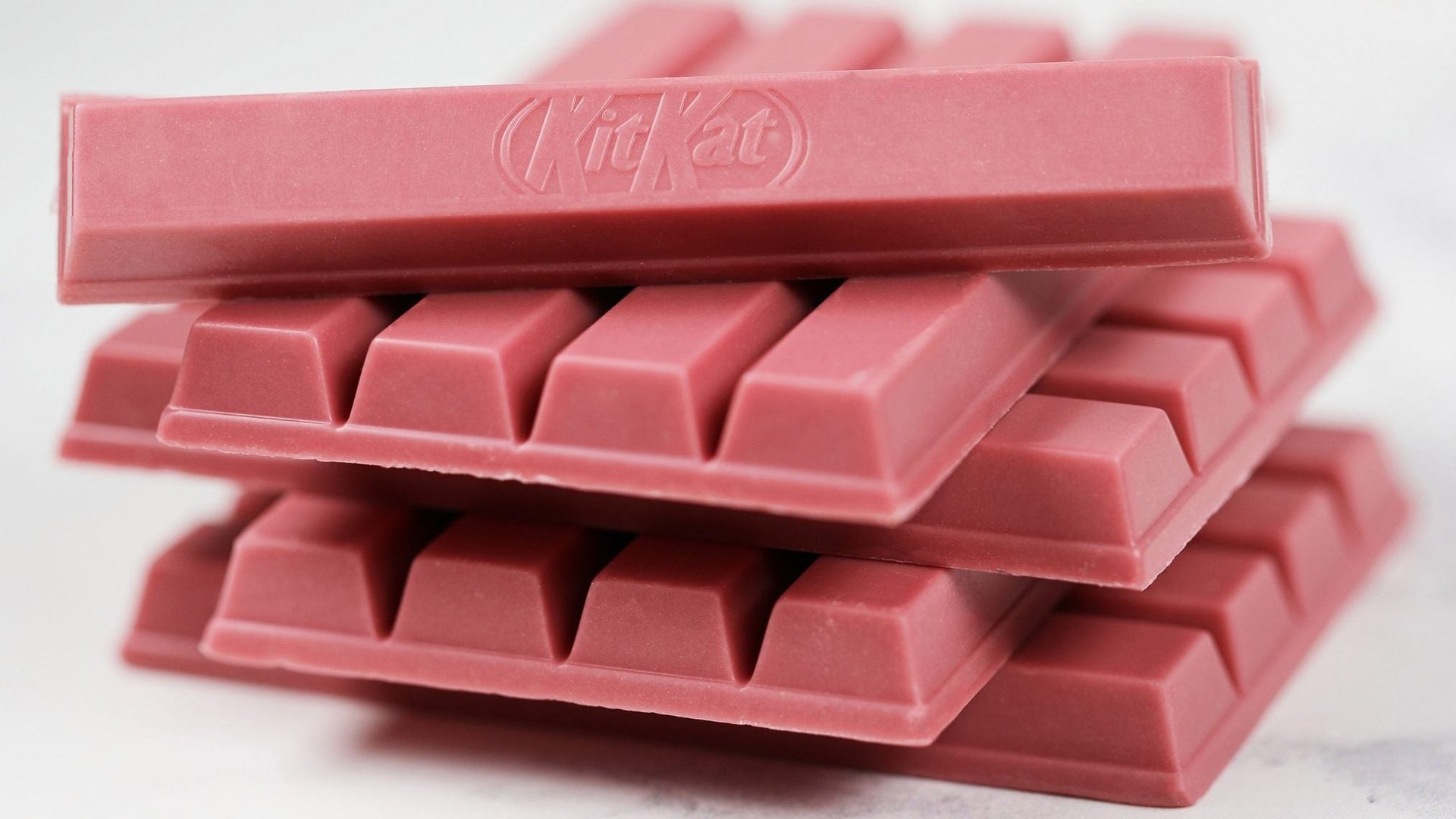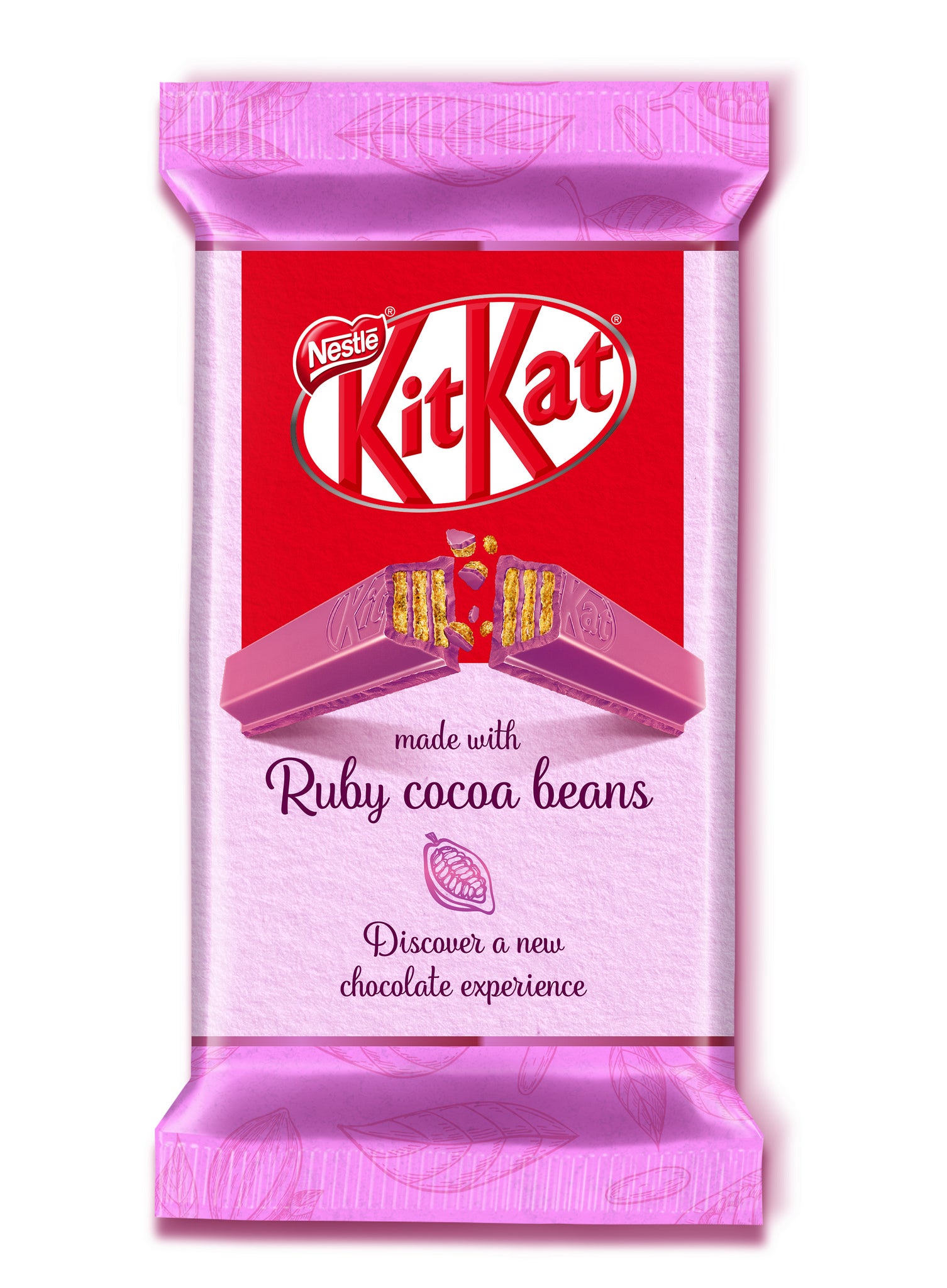The “ruby” chocolate Kit Kat is perfect food marketing—but not much else
On Monday, April 16 a new Kit Kat made with ruby chocolate will be available in the UK. I’ll admit it, my curiosity is piqued and I will try it, but I also know that it’s a lie. Deciphering the buzz around ruby chocolate is a lesson in how not to fall for modern food industry marketing magic—and fake food news.


On Monday, April 16 a new Kit Kat made with ruby chocolate will be available in the UK. I’ll admit it, my curiosity is piqued and I will try it, but I also know that it’s a lie. Deciphering the buzz around ruby chocolate is a lesson in how not to fall for modern food industry marketing magic—and fake food news.

Back in September the Swiss company Barry Callebaut—which bills itself as “the world’s leading manufacturer of high-quality chocolate”—announced that, after years of research, it had developed “the fourth type” of chocolate. And this meant that soon ruby chocolate would join the trinity of dark, milk, and white chocolates. It all sounded very official and exciting, but if you read the press release closely, there was very little actual information in it.
Callebaut established that ruby chocolate does not have coloring or flavoring added, fair enough. But the document had a hard time answering some basic questions.
How does it taste? “Ruby chocolate has an intense taste and characteristic reddish color.” Oh, ok.
How is it made? “The bean has a specific set of attributes, which Barry Callebaut managed to unlock through an innovative process that took many years to develop.” Clear as a chocolate fountain.
Where do the beans come from? Single origin beans are huge in the chocolate world right now and the best way to trace accountability for labor and environmental practices. “The cocoa beans are sourced from different regions of the world.”
By introducing this as an official fourth type of chocolate, Callebaut sets up a framing that feels true, and requires a fair amount of specific chocolate knowledge to question. But chocolate bloggers and careful reporters were not impressed by the idea, calling into question the process, which remains opaque, and the idea that this is actually some new type of chocolate bean, which it is not.
The real clue in the press release that ruby chocolate is a marketing innovation (and not an actual confectionary first) is this phrase, “Ruby chocolate…satisfies a new consumer need found among Millennials—Hedonistic Indulgence.” Which means that ruby chocolate is not some kind of wonder food that was just waiting to be discovered by diligent, curious chocolate makers. Rather, it’s a product that was designed for an eerily specific market niche—millennials who are in the mood to try something new and decadent feeling. And this type of targeting is not unique to the chocolate industry.
In his book The Dorito Effect, Mark Schatzker explains the concept of the need state, as large food companies define it. “A need state is an emotional requirement for food,” he writes. “A single mom who has to put together dinner for her fussy teenage daughters has a need state for a no-fuss dinner with a hint of adventure…She wants food that makes her family feel steady, satisfied, and pleased, but also enthusiastic, energetic, and a little bit daring.”
Food designed for a need state is not real food, it’s culinary exploitation of our emotional connection to food. Simply by covering it with such emotion—and yes, I’m part of the problem—the media is legitimizing the whole concept of ruby chocolate being an exciting outpost on a chocolate frontier. But from its millennial pink color to its debut on a Kit Kat—which is known for unceasing novelty—this is an industrially manufactured bit of confectionary, not a newly discovered flavor horizon.
As a working mom of two young children I have a perpetual need state for hedonistic indulgence, and yes, I’ll obviously try a Ruby Kit Kat—and any Kit Kat sold in Japan or Korea for that matter. But as I’ll enjoy that “intense taste and characteristic reddish color,” I’ll keep in mind that what I’m eating is primarily a clever piece of marketing.